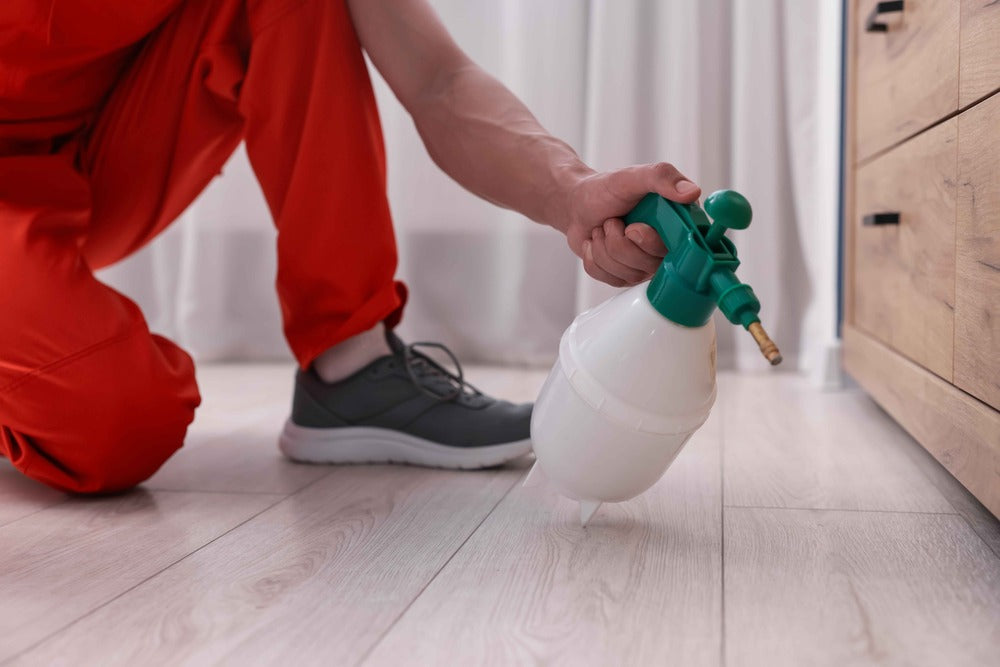
Does Rodent Repellent Spray Work? What To Know Before Buying
Share
If you’ve spotted mouse droppings in your garage or heard scratching in the walls, chances are you’ve already Googled a dozen quick fixes — and rodent repellent sprays are probably near the top of the list. They’re easy, affordable, and seem like a no-brainer. Just spray around a few key areas and the mice will stay away, right?
Well, maybe …
As we’ll explore in this blog, rodent sprays can help, but they may not be the long-term solution you’re hoping for.
Do Rodent Repellent Sprays Work?
The short answer is yes — but not reliably.
Studies have shown that because of their strong sense of smell rodents will avoid certain essential oils like peppermint, eucalyptus, and clove, but the effects are often temporary. Not only do the scents fade quickly, but the mice grow used to them over time.
Sprays tend to work best in storage cabinets, engine bays, or crawl spaces — enclosed areas where odors linger. Elsewhere, like in your home or garage, even the slightest breeze will be enough to neutralize your efforts.
How to Use Repellent Sprays the Right Way
If you’re going to use rodent repellent spray, you’ll get the best results by treating it like a supporting tool, not a standalone solution.
Start by identifying potential entry points: along garage doors, under sinks, inside engine compartments, and near baseboards. These are the areas you want to spray — heavily. Reapply at least once a week or after any rain, wind, or cleaning that could dilute the scent.
Different types of sprays can be used depending on your needs:
- Essential oil blends are the most common — usually a mix of peppermint, clove, and cinnamon oils.
- Chemical repellents may include capsaicin (the compound that makes chili peppers hot) or ammonia-based agents that irritate a rodent’s senses.
- Commercial products like Harris or Victor sprays combine multiple ingredients for longer-lasting results. Some even include predator scents, like fox urine.
For an easy DIY version, try mixing:
- 1 cup of water
- 2 teaspoons peppermint oil
- A few drops of dish soap (to help it bind)
Spray it around suspected rodent zones and refresh regularly. It won’t stop an infestation — but it might slow one from starting.
Comparing Your Options
| Spray Type | Ingredients | Pros | Limitations |
|---|---|---|---|
| Natural / Essential Oils | Peppermint, clove, cinnamon | Non-toxic, safe, pleasant scent | Needs frequent reapplication |
| Chemical Repellents | Capsaicin, ammonia | Stronger deterrent | May be unsafe for pets/children |
| Commercial Blends | Multiple oils + synthetic scents | Longer-lasting, easy to apply | Mixed reviews; not foolproof |
| DIY Mixes | Water, oil, soap | Cheap and customizable | Short-lived; varies based on strength |
Why Repellent Sprays Fail
If you’ve sprayed every inch of your home and still keep finding signs of an infestation, don’t be surprised. There are numerous reasons why rodent repellants fall short of doing their job:
- Mice don’t give up easily: If food or shelter is at stake, even the strongest-smelling spray won’t deter a determined rodent. A musty peppermint aroma is a small price to pay for survival.
- Scent dissipates fast: A smell will linger only for so long, which means your spray is losing effectiveness every second that passes.
- Habituation is real: The more a rodent is exposed to a scent, the more they’ll grow used to it. That’s why combining a spray with physical deterrents or other repellants is more effective.
- Gaps still let them in: If your space is full of unsealed entry points, it doesn’t matter what you spray. Mice can squeeze through holes as small as a dime — and once they’re inside, the scent barrier is meaningless.
How To Rodent-Proof Long Term
The key to keeping rodents out for good isn’t turning them away — it’s preventing them from ever entering.
Here are five steps that will actually help:
- Seal all entry points: Use steel wool, copper mesh, or caulk to close even the tiniest gaps. Look for openings around pipes, door frames, siding, and floor vents.
- Eliminate food and nesting material: A clean environment is essential to rodent-proofing. Not only will food and trash attract hungry mice, but so will cardboard, paper, and fabric — anything they can use for nesting material.
- Set traps to monitor activity: Traps are often the only surefire way to remove rodents who have already entered your home — check out our guide on how to use them most effectively.
- Use sprays strategically: Use sprays at entry points or in areas where sealing isn’t possible — like inside a car’s engine bay. But reapply often and combine with other methods.
- Install a mouse barrier: A mouse cannot damage what it cannot reach. The Box-Kat provides a permanent, physical perimeter that prevents mice from climbing, chewing, or squeezing their way through. Built with our patented flex-panels, the barrier creates a tight seal by adapting to uneven surfaces. It’s the perfect solution for rodent-proofing your car, RV, or garage.

Should You Use Rodent Repellent Sprays?
Rodent repellent sprays aren’t a scam. Used correctly, they can offer a layer of protection — especially in combination with other methods. But they’re not magic. If you want reliable, long-term defense, the only real solution is to stop rodents from getting inside in the first place.
Seal the gaps. Remove the temptations. And if you’re storing a vehicle, camper, or supplies in a mouse-prone area, don’t rely on scent — install a barrier that actually keeps them out.



